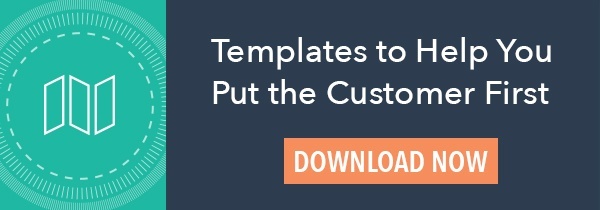Editor's note: This is the third post in an 11-part series on the HubSpot Customer Code. You can subscribe to the full series here.
Businesses need customer personas.
Personas are a powerful tool to help align vectors. When everyone understands who your customer is, what their problems are, and how your business can help them you find that making decisions about hiring, budgeting, and even specific tactics becomes much easier. We’re big fans of personas at HubSpot, and even built a tool to help people make personas.
But while a business sells to a persona, people sell to other people.
A person has fears, hopes, and dreams.
A person is unique.
Not only is treating your prospects and customers like people the right thing to do, it’s also the smart thing to do. Here’s one story that demonstrates this pretty well:
Our email marketing team is always tweaking our email process to improve engagement. By early 2017, they had tried some clever ways to segment and promote content to our list:
Segmenting by the topic of the first offer downloaded (i.e., social media, email marketing) -- showed some positive results.
Segmenting by business goals of the first offer downloaded (i.e., generating leads, improving sales pipeline) -- showed even better results.
Then they thought of something so simple, it was truly revolutionary. What if, instead of guessing what someone cares about based on the content they downloaded, we just asked them?
In other words, instead of trying to bucket people by persona, we treat them like a unique individual and say, “What do you what to learn more about?”
The result was a 1000% (yes, that’s the right number of zeroes) improvement in our clickthrough rate.
Our email team calls this approach the “pick-your-own-adventure” strategy. I like that.
Turns out, it works for sales teams too.
A few years ago, we switched from the classic BANT (Budget, Authority, Needs, Timeline) approach to sales to our own qualification matrix: GPCT (Goals, Plans, Challenges, Timeline).
Notice a pattern here?
Once again, we’re starting with the goals of a unique individual. Like our email marketing team, the sales team also starts by asking: What are you trying accomplish? What does success look like for you.
They’re selling to people, not personas.
The second tenet of The Customer Code is: Treat me like a person, not a persona. We gave ourselves an 8 out of 10 here.
We’re doing quite a few things right here. In addition to the stories mentioned above:
We’re making it easier for prospects/customers to contact us how they want to contact us: Phone, email, chat, or a knowledge base that allows them to help themselves.
We’re making it easier for prospects/customers to contact us when they want to contact us by offering 24-hour support.
But we’re not where I want us to be yet.
One area we’re focusing on that will help us get closer to a 10 is what we call the Nth user experience. When we onboard the first user of HubSpot, we once again use the GPCT method to understand that person’s priorities. We go deep with them to understand who they are and how we can help them get the most possible value out of the product. As a result, NPS for our first users is very high.
But as additional users are added--Nth users--we see their NPS begin to slip. We’re not doing that deep “get to know me as a unique person” work. In many ways, that first user becomes the “persona” that we expect all users from that company to adhere too. But people are unique, even people who work for the same company. They might even be solving the same problem (increase revenue), but be focused on unique angles of that problem (increase brand awareness vs. increase MQL to SQL conversion rate).
Nth users represent tens of thousands of people. There is no way we can give them the high-touch, human-led onboarding that happens for our first user in the first 90 days. So our product team is experimenting with more automated onboarding flows that orients additional users to a busy portal while also putting their unique goals front and center.
Today, we onboard accounts. In the near future, we want to onboard individual people.
Businesses should always look for patterns: Finding patterns is how we grow. And personas are powerful patterns to find broad similarities and direct our efforts. But we need to remember when we send an email, pick up the phone, or respond to a chat message that we are never communicating with a persona. We are communicating with a person. Respecting that individuality and uniqueness is how companies grow better.
This post is part 3 of 11 in a series on HubSpot’s Customer Code. You can find more info on The Customer Code and how we score ourselves here, and watch my INBOUND talk on this topic here:
from Marketing https://ift.tt/2PIKw6k


No comments:
Post a Comment